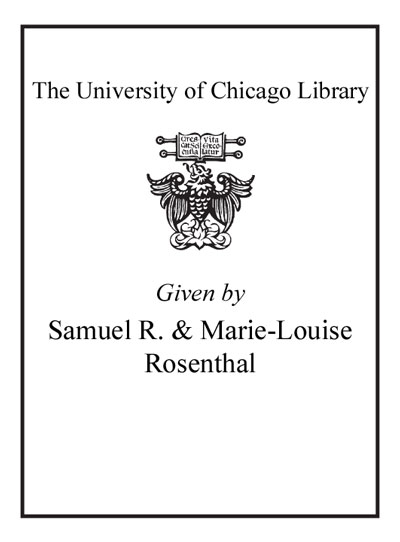Communicating early English manuscripts /
Saved in:
| Imprint: | Cambridge, UK ; New York : Cambridge University Press, 2011. |
|---|---|
| Description: | xxii, 290 p. : ill. ; 24 cm. |
| Language: | English |
| Series: | Studies in English language Studies in English language. |
| Subject: | |
| Format: | Print Book |
| URL for this record: | http://pi.lib.uchicago.edu/1001/cat/bib/8349703 |
Table of Contents:
- Introduction
- 1. Communicating manuscripts: authors, scribes, readers, listeners and communicating characters Andreas
- Part I. Authors, Scribes and their Audiences:
- 2. Commonplace-book communication: role shifts and text functions in Robert Reynes's notes contained in MS Tanner 407
- 3. Textuality in late medieval England: two case studies Gabriella
- 4. The significance of now-dispersed Bute 13: a mixed-language scientific manuscript Patricia
- 5. Communicating attitudes and values through language choices: diatopic and diastratic variation in Mary Magdalene in MS Digby 133
- 6. Constructing the audiences of the Old Bailey Trials 1674-1834
- Part II. Communicating through Handwritten Correspondence:
- 7. A defiant gentleman or 'the strengest thiefe of Wales': reinterpreting the politics in a medieval correspondence
- 8. Sociopragmatic aspects of person reference in Nathaniel Bacon's letters
- 9. Poetic collaboration and competition in the late seventeenth century: George Stepney's letters to
- 10. Handwritten communication in nineteenth-century business correspondence
- Part III. From Manuscript to Print:
- 11. The relationship between MS Hunter 409 and the 1532 edition of Chaucer's works edited
- 12. The development of play-texts: from manuscript to print
- 13. Communicating Galen's Methodus medendi in Middle and Early Modern English Päivi Pahta
- 14. Prepositional modifiers in early English medical prose: a study ON their historical development IN noun phrases
- 15. The pragmatics of punctuation in Older Scots
- Part IV. Manuscripts and their Communicating Characters:
- 16. Greetings and farewells in Chaucer's Canterbury Tales
- 17. Attitudes of the accused in the Salem witchcraft trials

